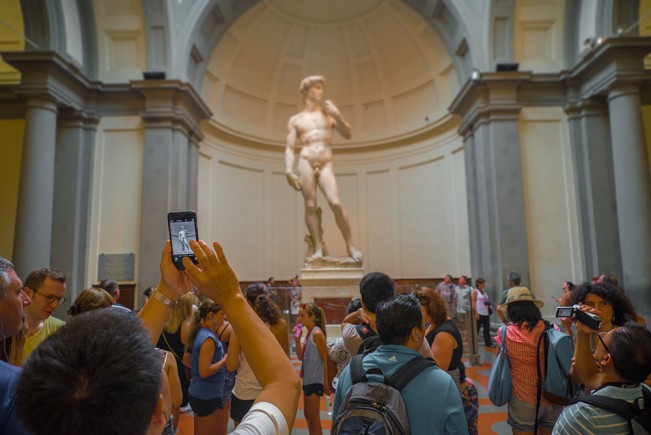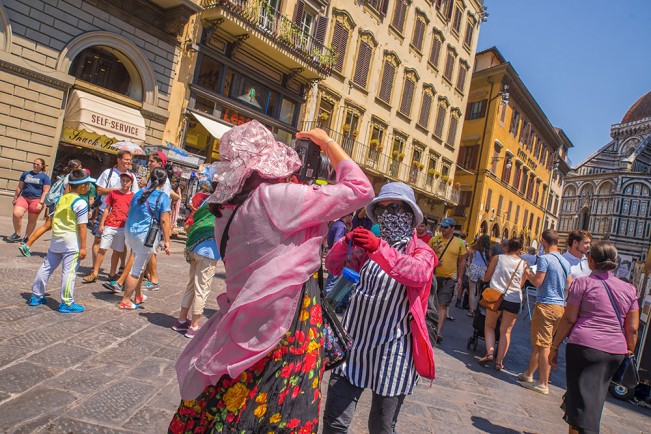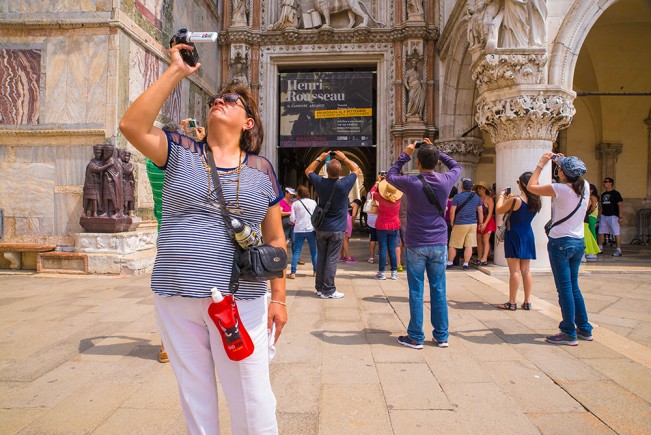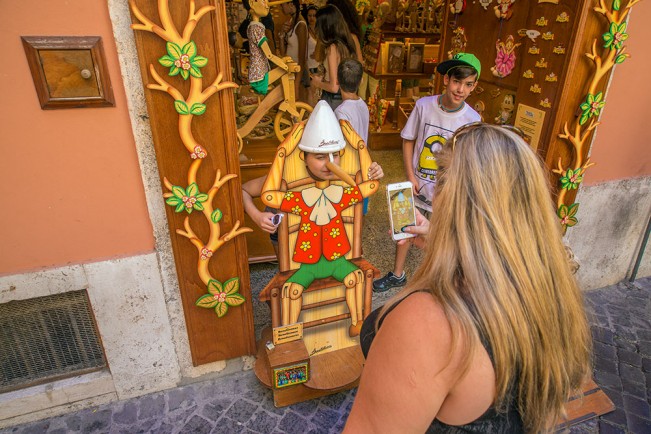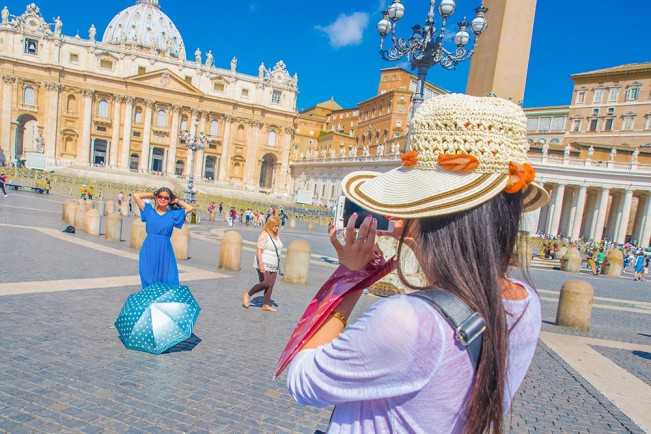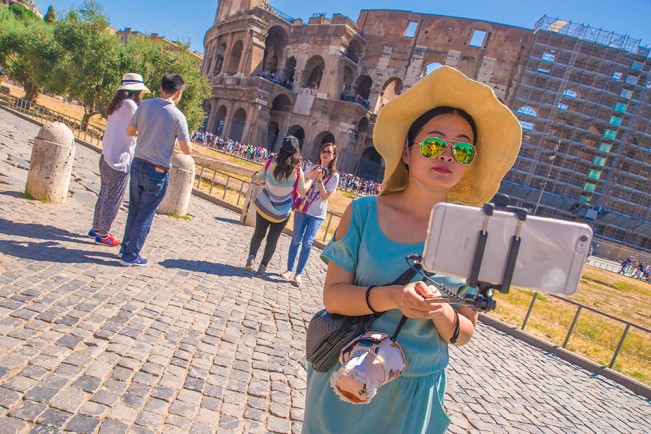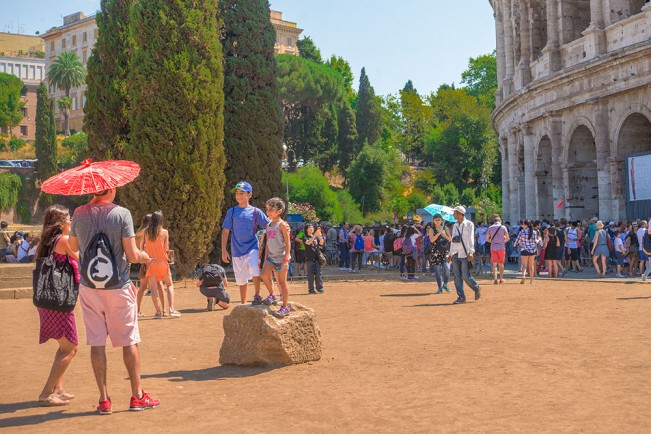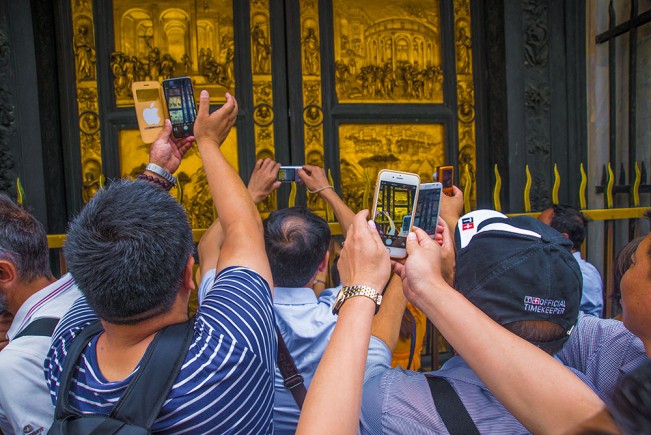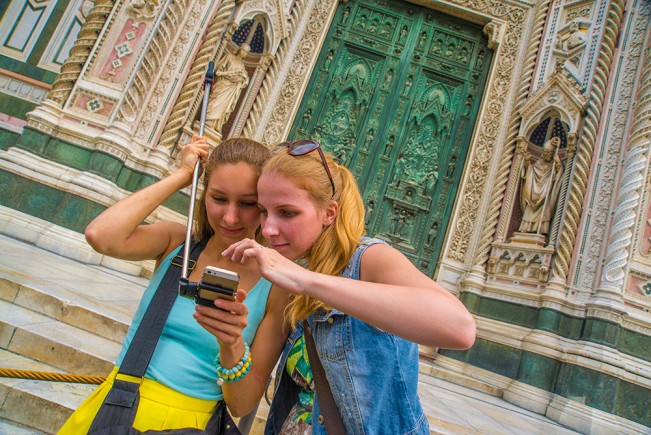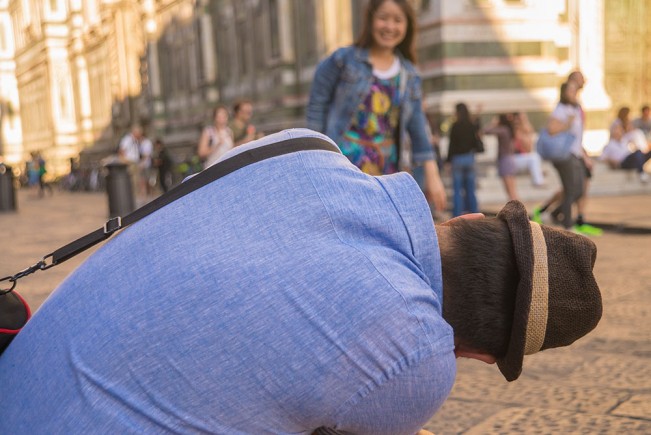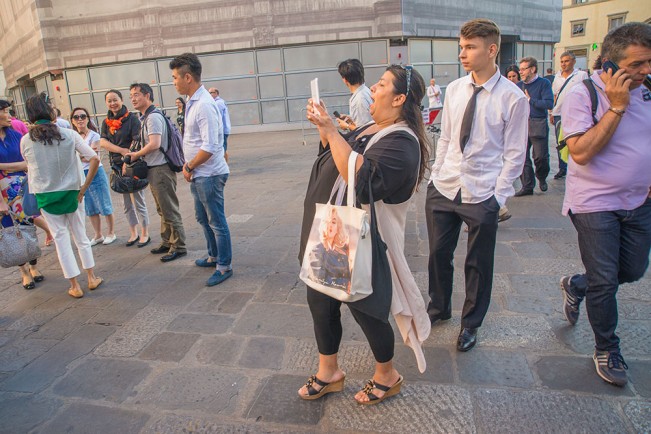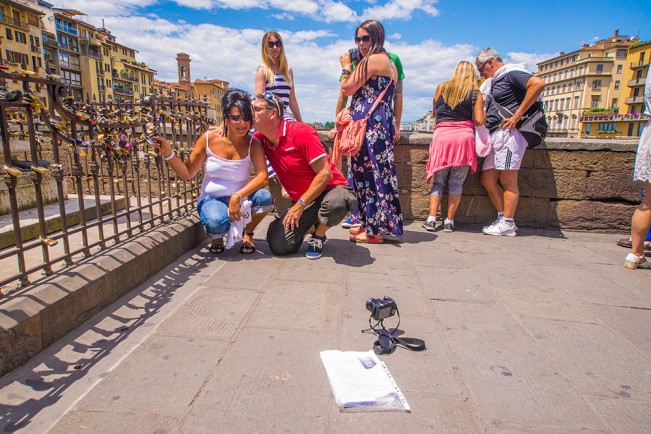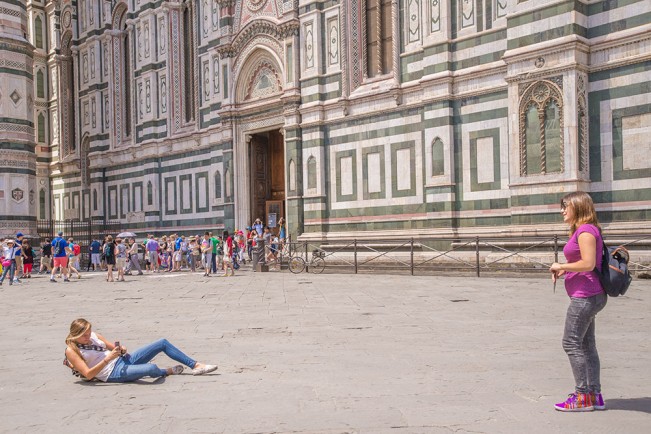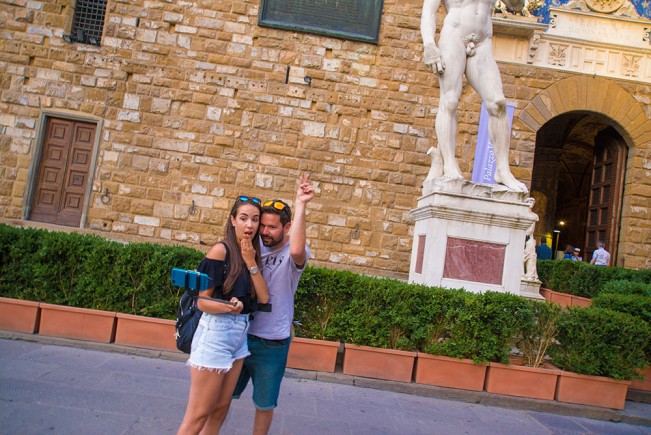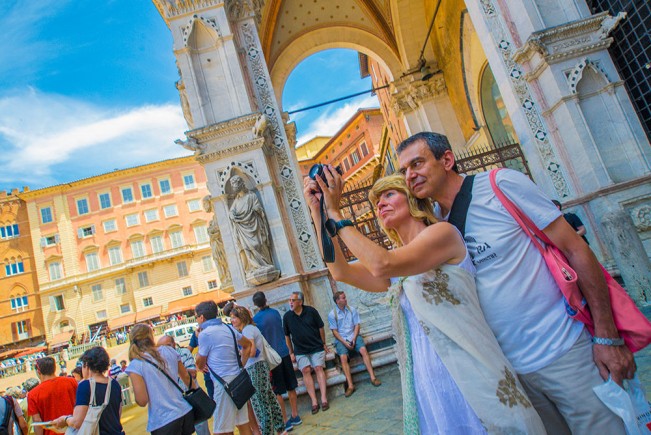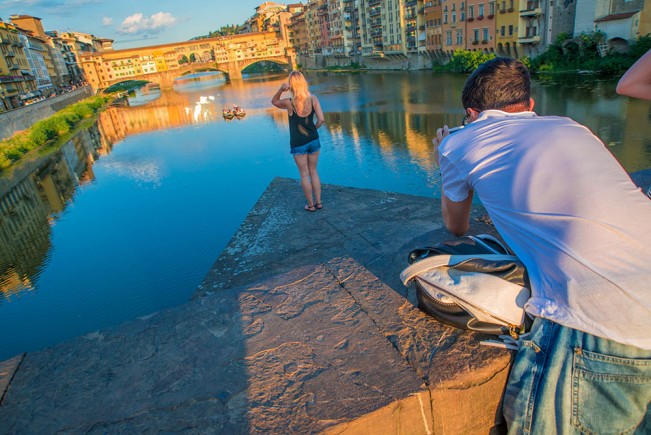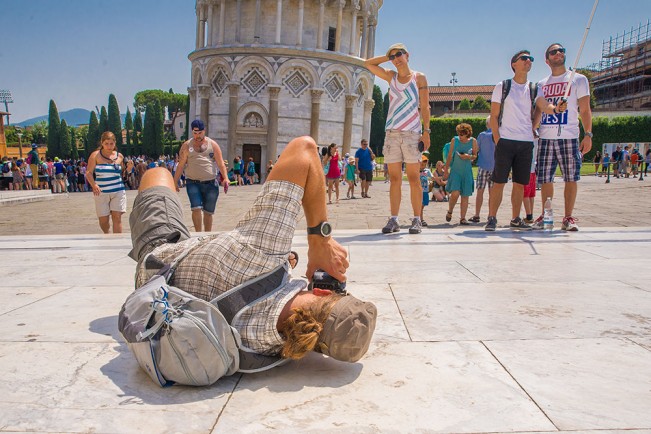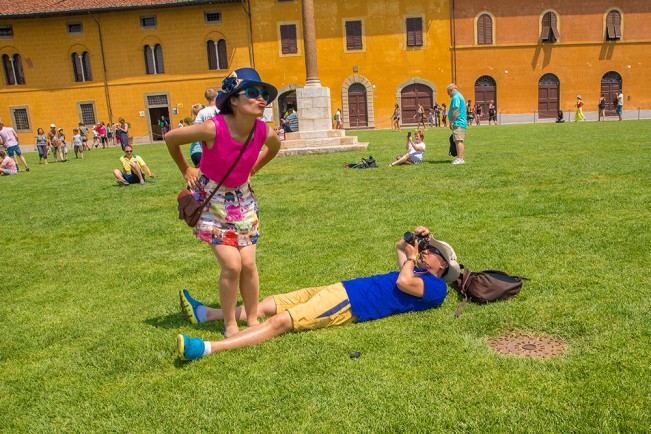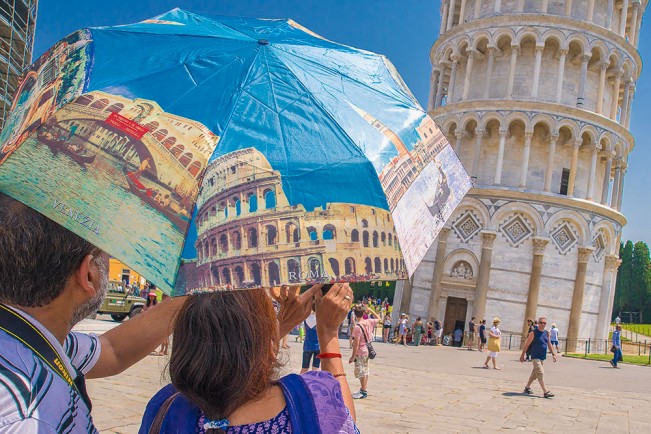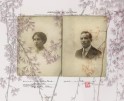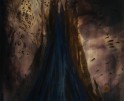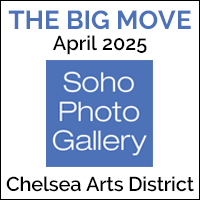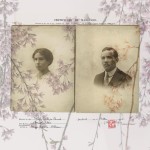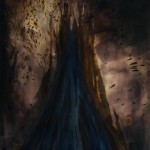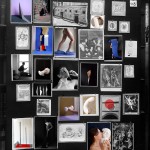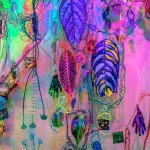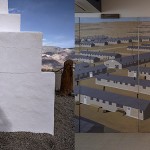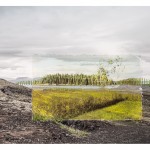Dan Younger: Various Photographers of Italy
Dan Younger spent two months in Italy this past summer and as he states, “I pride myself in taking on and transforming subject matter in photography which are mostly the province of amateurs: vacations and children.” His tableaux of tourists experiencing history through the lens of a cell phone are at once humorous, concerning, and a statement about how we choose to perceive the world. The ubiquitous cell phone documentation of ourselves and our environment have changed street photography as we know it.
Dan is a Professor of Art, founder of the studio area and former chair of the Department of Art & Art History at the University of Missouri in St. Louis. He has over 150 national and international exhibits, and his works are in numerous public collections including Museum de Stadt, in Gladbeck Germany, The Fox Talbot Museum and the National Trust, Lacock, England, The Museum of Contemporary Photography (Chicago), the Harry Ransom Center at UT- Austin, The Saint Louis Art Museum, and Diaphne – Pole Photographique, of Montreuil, France.
His pictures of strangers enjoying (and photographing) themselves in vacation spots, called Travel Places has been shown across the US and was the subject of a solo exhibition at the Sheldon Galleries in St. Louis in February 2014. At UMSL, Younger teaches four seminar classes in photography: Advance Problems in Photography 1 & 2 and Senior Seminar in Photography 1& 2. He also teaches The History of Photography for the Art History area and Comics and Cartoon Illustration, a studio class. The comic books produced by the cartoon class (six in all) have been collected by two national cartoon museums, one in the US at the Billy Ireland Cartoon Library and Museum in Columbus, Ohio, and the Cartoon Museum in London, England. In 2014 he offered a class in 19th century English Photography in the UK, touring UMSL students to various sites of historical significance in England. He is a member of the Royal Photographic Society (UK) and The Society for Photographic Education (US).
Various Photographers of Italy
Photographing photographers – it seemed a natural decision to photograph Italy this way, for everywhere you wanted to be, everywhere you wanted to make a picture, there was a visitor with a camera, sometimes many visitors with cameras, all there in front of you and all there jostling for a picture.
I am six foot six inches tall, and I can elbow my way to the front if I wanted to or I could shoot over everybody’s head if necessary. But it occurred to me that the real picture, the authentic view, was to make note of the scrum of photographers in front of every major attraction on my journey through Italy.
These days, Lorenzo Ghiberti’s beautiful Baptistery doors in Florence are obscured by scores of camera wielding tourists in scenes that rival the herd of paparazzi surrounding a famous celebrity. Major works of art in museums are now blocked by hoards of viewers with cameras, the scene reminiscent of press coverage of congressional hearings. Because most cameras have viewers on the back of the camera (or phone) it’s easy to see what everyone is trying to view by looking at the resulting scene on the camera in front of you.
Do I lament this? Well, this trend has given me this book, so perhaps not as much as others might, and it would be disingenuous of me to lament the technology that has given everyone a portable camera. Even with my “big” camera available, I still use my iPhone for some pictures. Moreover, the desire to photograph the world and the camera operator’s presence in that world, long predates the advent of digital cameras and iPhones.
I am amazed at the selfie sticks, but not so at the sticks themselves, but at the sheer volume of selfies that the purchase of these devices implies. Since the person holding the stick is always closer and therefore larger in the photograph than the monument or painting or the tourist attraction which drew this person’s attention, then it would seem in these images the photographer is visually, if not graphically, more important than the attraction. It seems odd that the place which attracted the tourist/photographer plays second fiddle to the traveler.
In an earlier portfolio I mentioned that I was interested in the idiosyncratic [sic] behavior of humans while at places of leisure. While the behavior exhibited in this set of images rotates around cameras and photography, it is the most interesting to me if is still contains that eccentric flavor. Lately I seem to be drawn to travel, not for the attractions, but for the people drawn to such places. For me, tourists have become the attraction.
Posts on Lenscratch may not be reproduced without the permission of the Lenscratch staff and the photographer.
Recommended
-
Rachel Nixon: Art + History Competition Honorable MentionApril 3rd, 2025
-
Photography Educator: Frank LopezMarch 21st, 2025
-
TOP #20 Expanded CyanotypesMarch 18th, 2025
-
Re-molding the Self: Clay Feet, Photographs by Rebecca HorneMarch 5th, 2025
-
Nancy Kaye: Too Many GunshotsMarch 4th, 2025

